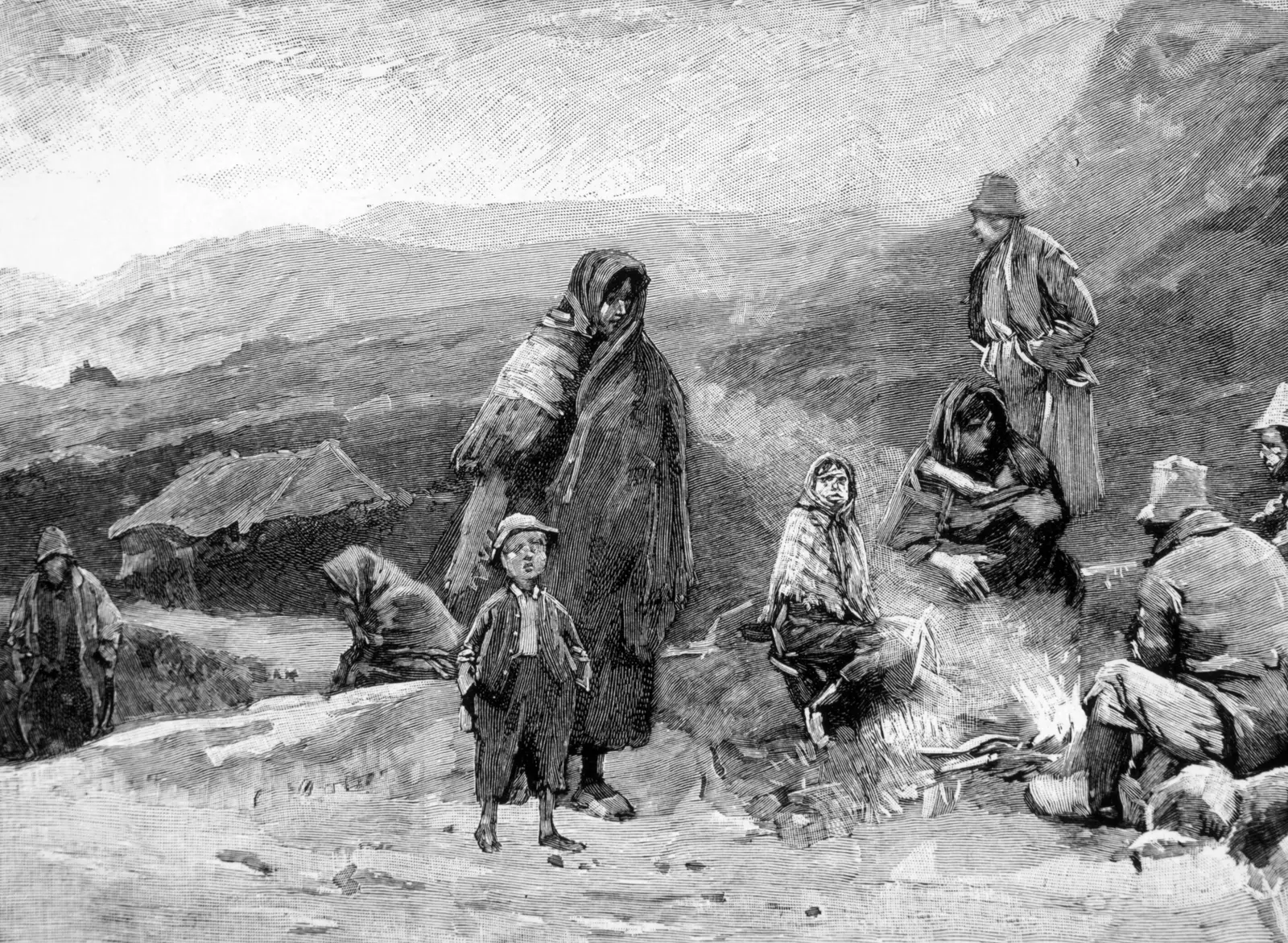The Great Famine of Ireland
"The Great Famine of Ireland" dives deep into one of Ireland's darkest chapters—the Great Famine. Beyond the potato blight lies a tale of politics, resilience, and migration. Journey with us through this poignant saga to understand the true impact of the famine on the Emerald Isle

Ireland, a land adorned in emerald hues and imbued with a rich tapestry of history, experienced one of its darkest chapters during the mid-19th century – The Great Famine. But this wasn’t just a test of crops; it was a test of resilience, hope, and the indomitable spirit of the Irish.
1. Seeds of the Catastrophe: The Potato Blight
The foundation of this calamity lay in Ireland's heavy dependency on a singular food source: the potato. When the Phytophthora infestans fungus, commonly known as the potato blight, invaded Ireland in 1845, it caused massive crop failures. This blight wasn’t just an Irish problem – it ravaged crops across Europe – but Ireland felt the blow more acutely. Why? Because for the Irish, the potato was more than just a staple; it was life.
2. Numbers That Speak Volumes
Between 1845 and 1852, the consequences of the potato blight were catastrophic:
- Over 1 million people died due to starvation and disease.
- Another 1 million emigrated, resulting in a 20-25% population decrease.
Such vast numbers don’t just depict death and migration; they represent countless stories of families torn apart, traditions lost, and dreams shattered.
3. Politics and Policies: Did They Fuel the Fire?
While the potato blight was a natural disaster, the extent of the famine can’t solely be attributed to it. The political landscape played a crucial role. Ireland, then under British rule, faced policies that either were ill-conceived or lacked empathy.
Some factors aggravating the crisis:
- Export Pressure: Even during the famine, vast amounts of food were exported from Ireland to Britain.
- The Corn Laws: These were trade laws that imposed tariffs on grain imports, keeping food prices high and unaffordable for many Irish.
- Relief Efforts: While some relief was provided, it was often inadequate and came with strings attached, like public works programs that were both grueling and low-paying.
4. Emigration: The Bittersweet Escape
Faced with dire circumstances, many saw emigration as the only way out. Popular destinations included the US, Canada, Australia, and the UK. While these journeys offered hope, they weren’t without peril. "Coffin ships," overcrowded and disease-ridden, claimed the lives of many before they could reach new shores. Yet, those who survived planted the seeds of vibrant Irish communities in these new lands, ensuring that the spirit of Ireland lived on.
5. Echoes in Culture and Literature
The scars of the famine have been immortalized in Irish culture, art, and literature. From John Millington Synge's plays to the haunting melodies of traditional Irish songs, the famine's impact permeates the arts. Such expressions serve as powerful reminders, ensuring that the lessons from this dark chapter aren’t forgotten.
6. Lessons From the Land of Éire
What can we glean from this heart-wrenching episode? The Irish Famine underscores the dangers of over-reliance on a single crop and highlights the complex interplay between nature, politics, and social structures. In today’s world, where food security and equitable distribution remain concerns, there’s much to learn from Ireland's past.
In Conclusion:
The Irish Famine isn't just a historical event – it’s a saga of resilience against overwhelming odds. While the green hills of Ireland have long moved past this grim chapter, the memories persist, urging us to reflect, learn, and ensure that such tragedies aren't repeated.
As W.B. Yeats, a notable Irish poet, once said, "Too long a sacrifice can make a stone of the heart." By remembering and understanding events like the Irish Famine, we keep our collective hearts tender, empathetic, and proactive against potential future calamities.
